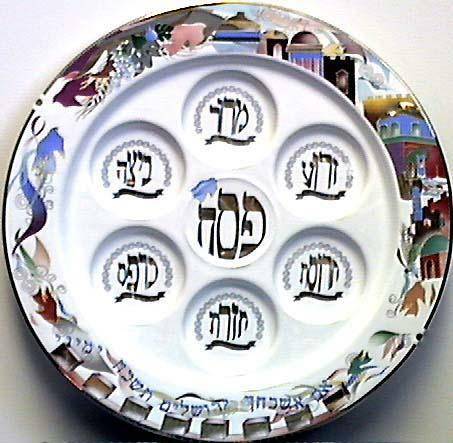LITR 5731: Seminar in American
Multicultural Literature (Immigrant)

Student Poetry Presentation summer 2006
Monday, 26 June 2006: selections from the Exodus story in the Old Testament of the Bible (student provides; King James / Revised Standard version preferred);
Poetry reader:
Midge Gorman
Poem: Michael S. Glaser, “Preparations for Seder,” UA 176

Biography:
Michael
Glaser was born 1943 in Chicago, Illinois and lives in St. Mary’s, Maryland .
Received his graduate degrees from Kent State University and began teaching at
St. Mary’s College of Maryland in 1970 where he is a Professor of English. He was
named Poet Laureate of Maryland August, 2004 plus many other awards and recognitions
over his lifetime. “ As
poet laureate, he said, he hopes to reach people across the state, reading poems
that he loves and encouraging people to write”. He has written two books of poems and two books of anthology.
He has said his poetry is a means of asking and often answering questions
life has to offer regarding the world at large, family and of his own Judaism
(which has been a source of inspiration to him).
What
is Seder?
Seder
is the most important event in the Passover celebration. It takes place the
first two nights of the eight day celebration. The
Seder is steeped in long held traditions and customs, includes family and
friends
Seder
plate--at the center of every seder. Because
of the popularity of the Passover seder, and because of the seder plate's
central position in its observance, the plate has become a very common outlet
for Jewish artistic expression.
Most
seder plates have six dishes for the six symbols of the Passover seder, although
some do have five

The
Seder plate contains foods that have special meaning for this holiday
1.
Haroseth - A mixture of chopped walnuts, wine, cinnamon and apples that
represents the mortar the Jewish slaves used to assemble the Pharaoh's bricks
2.
Parsley (dipped in salt water) - Symbolizing
Springtime, it is dipped in salt water to remind us of for the tears of the
Jewish slaves
3.
Roasted egg - Another
symbol of Spring
4.
Shank Bone - Symbolic
of the sacrificial lamb offering, the bone can come from whatever the family is
eating, such as the leg bone of a roasted turkey
5.
Bitter herbs Freshly
grated horseradish reflects the bitter affliction of slavery
Poem:
Demonstrates the points brought up in Objective 5
Objective
5: To observe and analyze the
effects of immigration as assimilation on cultural units or identities:
Family
Gender
Community
and Laws
Religion
Demographics
-maintaining
religious traditions remembering the Exodus and how life was for family,
extended family, and the community during their displacement
“think
of my father: how he stood at the elbow of his mother”, 176
-in
old days preparations was more difficult, wood stoves, chickens
ran
free making them more muscles with less fat…., 177
-Matzoh
is a symbol that commemorates the Israelites who fled quickly into the desert
with no time for their breads to rise and were forced to bake the dough into
hard crackers in the desert sun. Matzoh
is a very important element in the Seder.
-now
fat is plentiful, preserved with chemicals, 177
-I
will not forsake the traditions of my ancestors, 177
References:
http://www.smcm.edu/users/msglaser/poet_laureate/
http://www.washingtonpost.com/wp-dyn/
articles/A48830-2004Aug7.html
http://www.jewishtimes.com/scripts/edition.pl?
now=8/18/2004&stay=1&SubSectionID=48&ID=2370
http://www.holidays.net/passover/seder.html
http://nj006.urj.net/seder/plate.html
http://en.wikipedia.org/wiki/Seder
|
|
|
|


